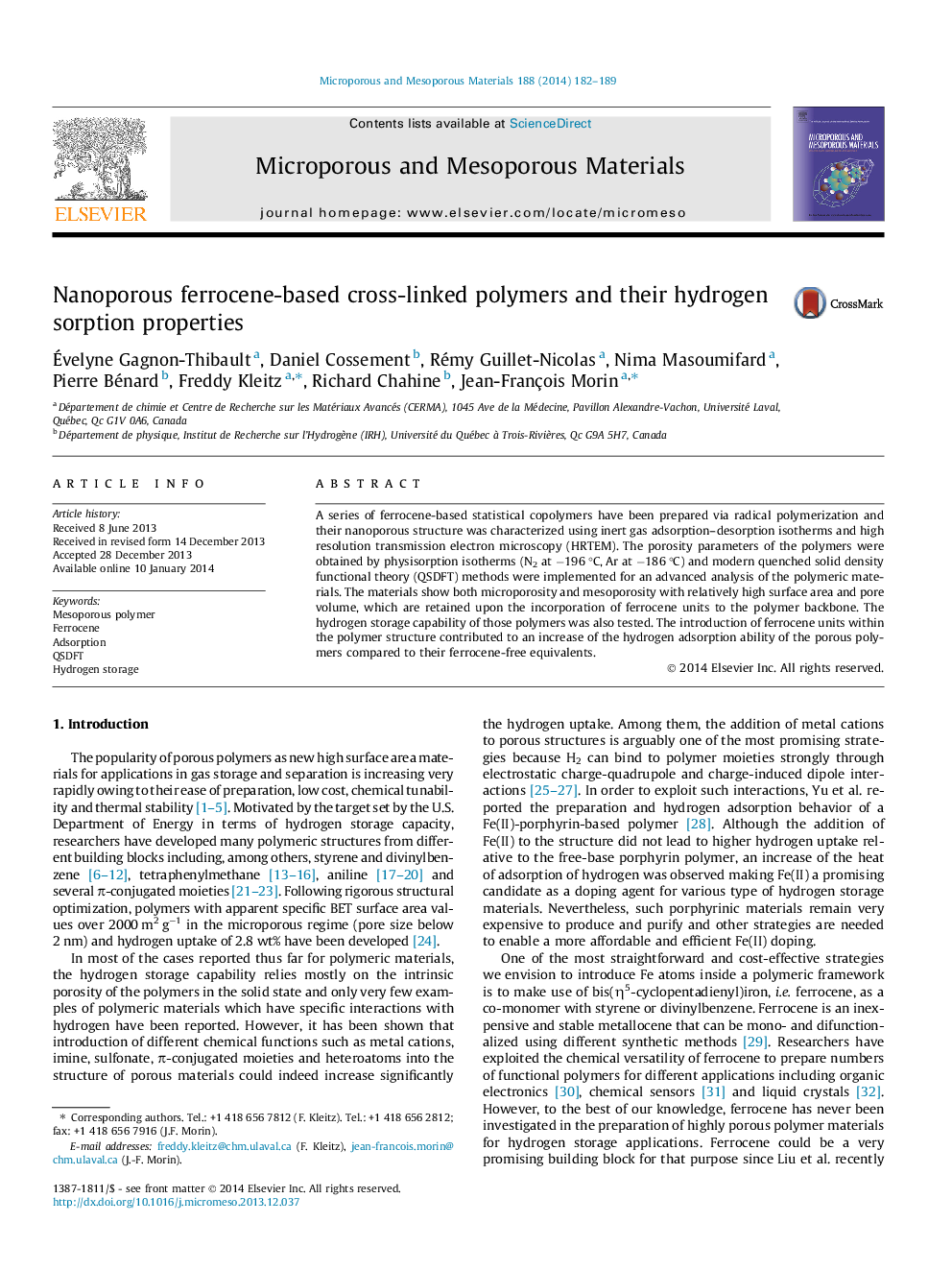| Article ID | Journal | Published Year | Pages | File Type |
|---|---|---|---|---|
| 73195 | Microporous and Mesoporous Materials | 2014 | 8 Pages |
•Highly cross-linked ferrocene-based nanoporous polymers were synthesized.•High resolution TEM images revealed the nanoporous structure of the copolymers.•Gas sorption properties are studied using quenched solid density functional theory.•Both microporosity and mesoporosity are observed upon inclusion of ferrocene units.•Insertion of ferrocene units in the polymer leads to distinct H2 storage properties.
A series of ferrocene-based statistical copolymers have been prepared via radical polymerization and their nanoporous structure was characterized using inert gas adsorption–desorption isotherms and high resolution transmission electron microscopy (HRTEM). The porosity parameters of the polymers were obtained by physisorption isotherms (N2 at −196 °C, Ar at −186 °C) and modern quenched solid density functional theory (QSDFT) methods were implemented for an advanced analysis of the polymeric materials. The materials show both microporosity and mesoporosity with relatively high surface area and pore volume, which are retained upon the incorporation of ferrocene units to the polymer backbone. The hydrogen storage capability of those polymers was also tested. The introduction of ferrocene units within the polymer structure contributed to an increase of the hydrogen adsorption ability of the porous polymers compared to their ferrocene-free equivalents.
Graphical abstractNew highly cross-linked ferrocene-based polymers were prepared and their hydrogen sorption properties were measured and correlated with their nanoporous properties and ferrocene content.Figure optionsDownload full-size imageDownload as PowerPoint slide
